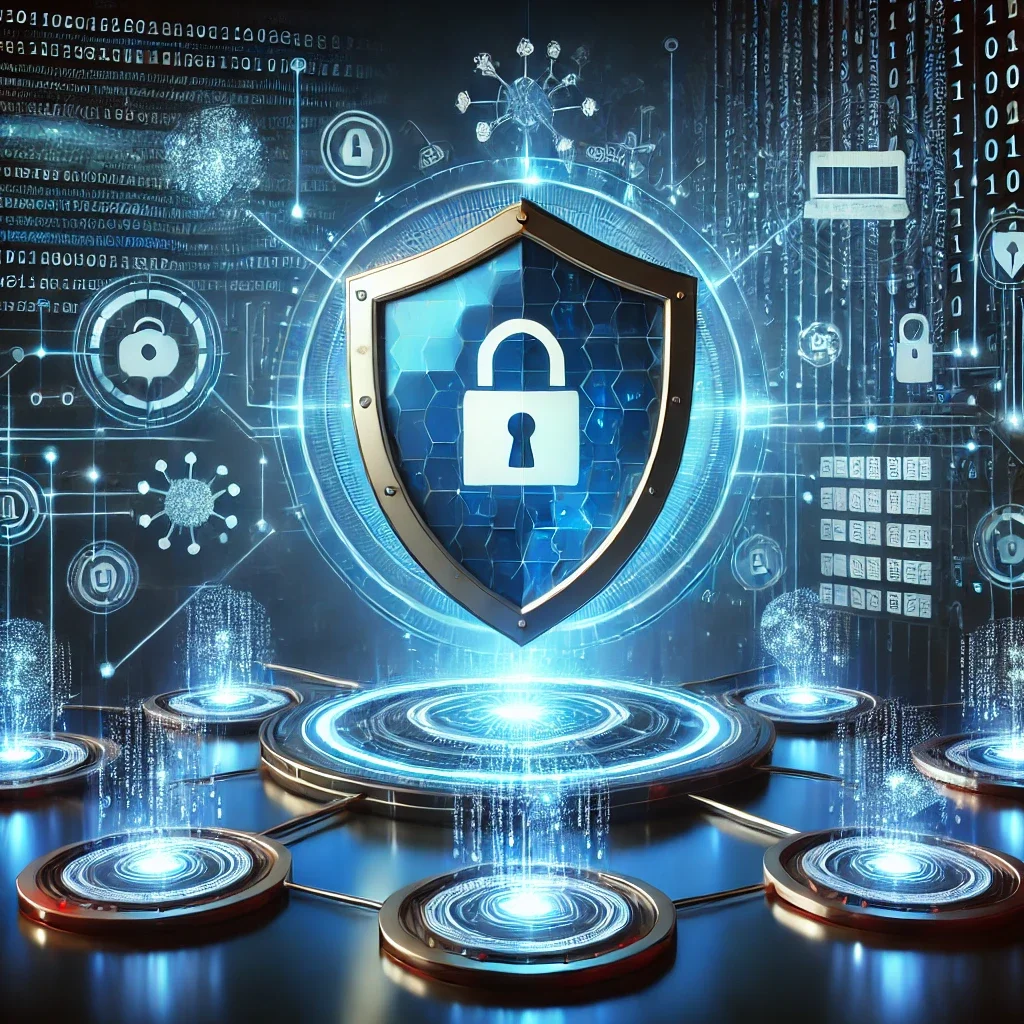In today’s digital world, cybersecurity is a fundamental necessity. It is the practice of protecting computer systems, networks, and data from cyber threats, unauthorized access, and attacks. As our reliance on technology grows, so does the importance of securing digital assets from hackers, malware, and other malicious actors.
Understanding Cybersecurity

Cybersecurity is not just about installing antivirus software or setting up firewalls. It encompasses a broad range of techniques, tools, and best practices that help individuals and organizations safeguard their sensitive information. It involves everything from securing personal devices to protecting critical infrastructure like banking systems, government networks, and healthcare databases.
To put it simply, think of cybersecurity as the digital equivalent of home security. Just like you lock your doors, install surveillance cameras, and use alarm systems to prevent intruders, cybersecurity involves various layers of protection to keep cybercriminals out.
Why Is Cybersecurity Important?
- Data Protection – Cybersecurity helps protect personal and corporate data from breaches. Imagine if hackers gained access to your bank account, emails, or confidential business files—this could lead to identity theft, financial losses, or reputation damage.
- Financial Security – Cybercrime costs businesses and individuals billions of dollars every year. Ransomware attacks, where hackers demand money in exchange for restoring access to encrypted files, have increased significantly.
- National Security – Governments and defense agencies rely on cybersecurity to protect sensitive national information from cyber espionage and cyber warfare.
- Privacy Protection – With the rise of social media and online platforms, personal privacy is at risk. Cybersecurity helps protect users from being tracked, hacked, or manipulated through data leaks.
Common Cyber Threats
1. Malware – Invisible Digital Threats
Malware is harmful software that infects systems, steals data, and disrupts operations. Common types include viruses, worms, trojans, and spyware. Attackers use malware to gain unauthorized access or destroy files.
Example: The ILOVEYOU virus spread via email in 2000, infecting millions of computers and causing billions in damages.
2. Phishing – Deceptive Digital Fraud
Phishing tricks users into revealing personal details like passwords and credit card numbers by impersonating trusted sources. It spreads through emails, fake websites, calls (vishing), or SMS (smishing).
Example: Hackers used phishing in 2016 to steal confidential emails from a high-profile political campaign.
3. Ransomware – Pay or Lose Access
Ransomware encrypts files and demands payment for unlocking them, often in cryptocurrency. Victims face data loss or financial extortion if they don’t comply.
Example: WannaCry (2017) attacked 200,000+ computers globally, demanding Bitcoin payments to unlock files.
4. DDoS Attacks – Crashing Websites with Overload
Hackers use botnets to flood websites with excessive traffic, making them slow or completely inaccessible. Businesses suffer downtime and financial losses.
Example: The Mirai Botnet (2016) attack disrupted major websites like Twitter, Netflix, and PayPal.
5. Social Engineering – Hacking Human Psychology
Instead of technical hacks, attackers manipulate people into revealing confidential data using pretexting, baiting, and fake authority.
Example: A hacker tricked a bank’s employee into resetting an executive’s password, gaining full access to sensitive accounts.
Real-Life Examples
1. Facebook Data Breach (2019)
In 2019, over 530 million Facebook users’ personal information, including phone numbers and email addresses, was exposed due to data scraping prior to September 2019. This incident highlighted the importance of robust data protection measures to prevent unauthorized data collection. to view
2. WannaCry Ransomware Attack (2017)
In May 2017, the WannaCry ransomware attack affected hundreds of thousands of computers across 150 countries. The malware encrypted data on infected systems, demanding ransom payments for restoration. Notably, the UK’s National Health Service (NHS) experienced significant disruptions, underscoring the critical need for timely software updates and robust cybersecurity practices. Wikipedia+3NHS England+3SDxCentral+3PMC
3. Yahoo Breach (2013-2014)
Between 2013 and 2014, Yahoo suffered two major data breaches, compromising the personal information of all 3 billion user accounts. The stolen data included names, email addresses, and security questions, making it one of the largest data breaches in history. This incident emphasized the necessity for companies to implement stringent security protocols and promptly address vulnerabilities. Yahoo Says 1 Billion User Accounts Were Hacked
How to Stay Safe Online
1. Use Strong Passwords – Your First Line of Defense
A strong password should be long, unique, and include a mix of letters, numbers, and symbols. Avoid using birthdays or common words like “password123.” Instead, create a random passphrase or use a password manager to store and generate secure passwords for you.
Example: A strong password: G3t@Safe&StayS3cure!
2. Enable Two-Factor Authentication (2FA) – Extra Security Layer
2FA adds a second step to login, such as a one-time code (OTP), fingerprint, or authentication app. Even if hackers steal your password, they can’t access your account without this second verification. Always enable 2FA for emails, banking, and social media accounts.
Example: Google and WhatsApp send OTPs for added login security.
3. Update Software Regularly – Stay One Step Ahead
Hackers exploit outdated software to access devices. Regular updates fix security flaws in operating systems, browsers, and apps. Turn on automatic updates for convenience and never ignore software update notifications. Keeping everything updated helps prevent cyberattacks.
Example: The 2017 WannaCry ransomware attack targeted computers with outdated Windows versions.
4. Avoid Suspicious Links – Think Before You Click
Cybercriminals often use fake emails, messages, or pop-ups with links leading to phishing sites or malware downloads. Never click on unknown links or attachments from unverified sources. Check URLs carefully and verify senders before opening emails.
Example: A fake email pretending to be from PayPal asks you to enter login details—this is phishing!
5. Use a VPN – Stay Private Online
A Virtual Private Network (VPN) encrypts your internet connection, hiding your IP address and online activities from hackers and trackers. It’s essential when using public Wi-Fi, as cybercriminals can easily intercept your data on unsecured networks.
Example: Using a VPN prevents hackers from stealing login details when browsing in coffee shops or airports.
Conclusion
Cybersecurity is essential in today’s digital landscape. Whether you’re an individual, a business, or a government entity, protecting your digital assets is crucial. By understanding cybersecurity threats and adopting best practices, you can reduce the risk of cyberattacks and navigate the online world more safely. Staying vigilant and informed is the key to a secure digital future.
Disclaimer
The information provided in this article is for educational and informational purposes only. While we strive for accuracy, cybersecurity threats and data breaches are constantly evolving, and new details may emerge over time. Readers are encouraged to refer to official sources and cybersecurity experts for the latest updates. We do not assume any responsibility for decisions made based on this content. Always prioritize strong security measures to protect your personal and professional data.
Cybersecurity Disclaimer
This content is for educational and ethical purposes only. We do not promote or condone illegal hacking, unauthorized access, or malicious activities.
By using this content, you agree to follow legal and ethical guidelines. Misuse may lead to legal penalties under the IT Act & BNS.
View Full Legal DisclaimerSupport Independent Content
Help us continue providing high-quality educational resources by making a donation. Every contribution makes a difference!





